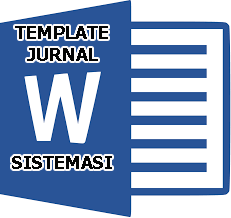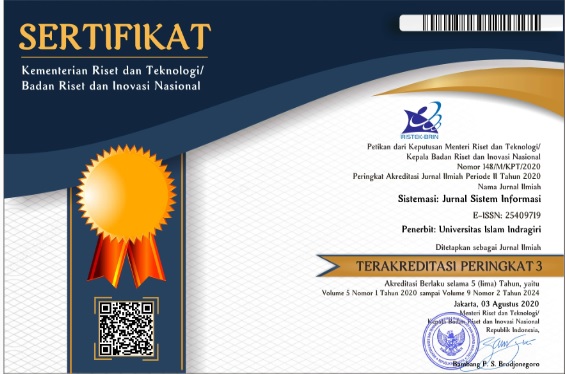Analysis of User Acceptance of The 2013 Curriculum E-Report from a Gender Perspective using UTAUT Model
Abstract
Full Text:
PDFReferences
C. M. Christensen, The innovator’s dilemma : when new technologies cause great firms to fail. Harvard Business School Press, 1997.
A. S. Choo, K. W. Linderman, and R. G. Schroeder, “Method and psychological effects on learning behaviors and knowledge creation in quality improvement projects,” Manage Sci, vol. 53, no. 3, pp. 437–450, Mar. 2007, doi: 10.1287/mnsc.1060.0635.
A. S. Choo, K. W. Linderman, and R. G. Schroeder, “Method and context perspectives on learning and knowledge creation in quality management,” Journal of Operations Management, vol. 25, no. 4, pp. 918–931, Jun. 2007, doi: 10.1016/j.jom.2006.08.002.
A. Suryadi, Kesetaraan gender dalam bidang pendidikan. Genesindo, 2004.
R. B. Duncan, “The ambidextrous organization: Designing dual structures for innovation,” The management of organization, vol. 1, no. 1, pp. 167–188, 1976.
R. Bendi and S. Andayani, “Analisis perilaku penggunaan sistem informasi menggunakan model UTAUT,” Semantik 2013, vol. 3, no. 1, pp. 277–282, 2013.
S. D. Anderson, “Project quality and project managers.”
V. Venkatesh, M. G. Morris, G. B. Davis, and F. D. Davis, “User acceptance of information technology: Toward a unified view,” MIS quarterly, pp. 425–478, 2003.
E. F. Al Mashagba, F. F. Al Mashagba, and M. O. Nassar, “Simple and efficient marker-based approach in human gait analysis using Gaussian mixture model,” Aust J Basic Appl Sci, vol. 8, no. 1, pp. 137–147, 2014.
J. H. Mustakini, “Sistem Informasi Keperilakuan,” Yogyakarta: Andi, 2007.
P. Anoraga and P. Kepemimpinan, “Jakarta: PT,” Dunia Pustaka Jaya, 1992.
A. Akmalia, K. Dio, and N. Hesty, “Pengaruh kinerja keuangan terhadap nilai perusahaan dengan corporate social responsibility dan good corporate governance sebagai variabel pemoderasi (studi empiris pada perusahaan manufaktur di bursa efek indonesia periode 2010-2015),” Jurnal Manajemen Bisnis, vol. 8, no. 2, pp. 200–221, 2017.
W. E. Deming, “Out of crisis, centre for advanced engineering study,” Massachusetts Institute of Technology, Cambridge, MA, pp. 367–388, 1986.
M. I. Benner and M. L. Tushman, “EXPLOITATION, EXPLORATION, AND PROCESS MANAGEMENT: THE PRODUCTIVITY DILEMMA REVISITED,” 2003.
L. P. Clare, G. J. Pottie, and J. R. Agre, “Self-organizing distributed sensor networks,” in Unattended ground sensor technologies and applications, SPIE, 1999, pp. 229–237.
M. A. Ramadhan and S. Sugiyono, “Pengembangan sumber dana sekolah pada sekolah menengah kejuruan,” Jurnal Pendidikan Vokasi, vol. 5, no. 3, pp. 340–351, 2015.
V. Venkatesh, J. Y. L. Thong, and X. Xu, “Unified theory of acceptance and use of technology: A synthesis and the road ahead,” J Assoc Inf Syst, vol. 17, no. 5, pp. 328–376, 2016.
I. Ghozali, “Aplikasi multivariate dengan program IBM SPSS 19,” Semarang: Badan Penerbit Universitas Diponegoro, vol. 68, 2011.
DOI: https://doi.org/10.32520/stmsi.v13i4.3902
Article Metrics
Abstract view : 418 timesPDF - 72 times
Refbacks
- There are currently no refbacks.

This work is licensed under a Creative Commons Attribution-ShareAlike 4.0 International License.









